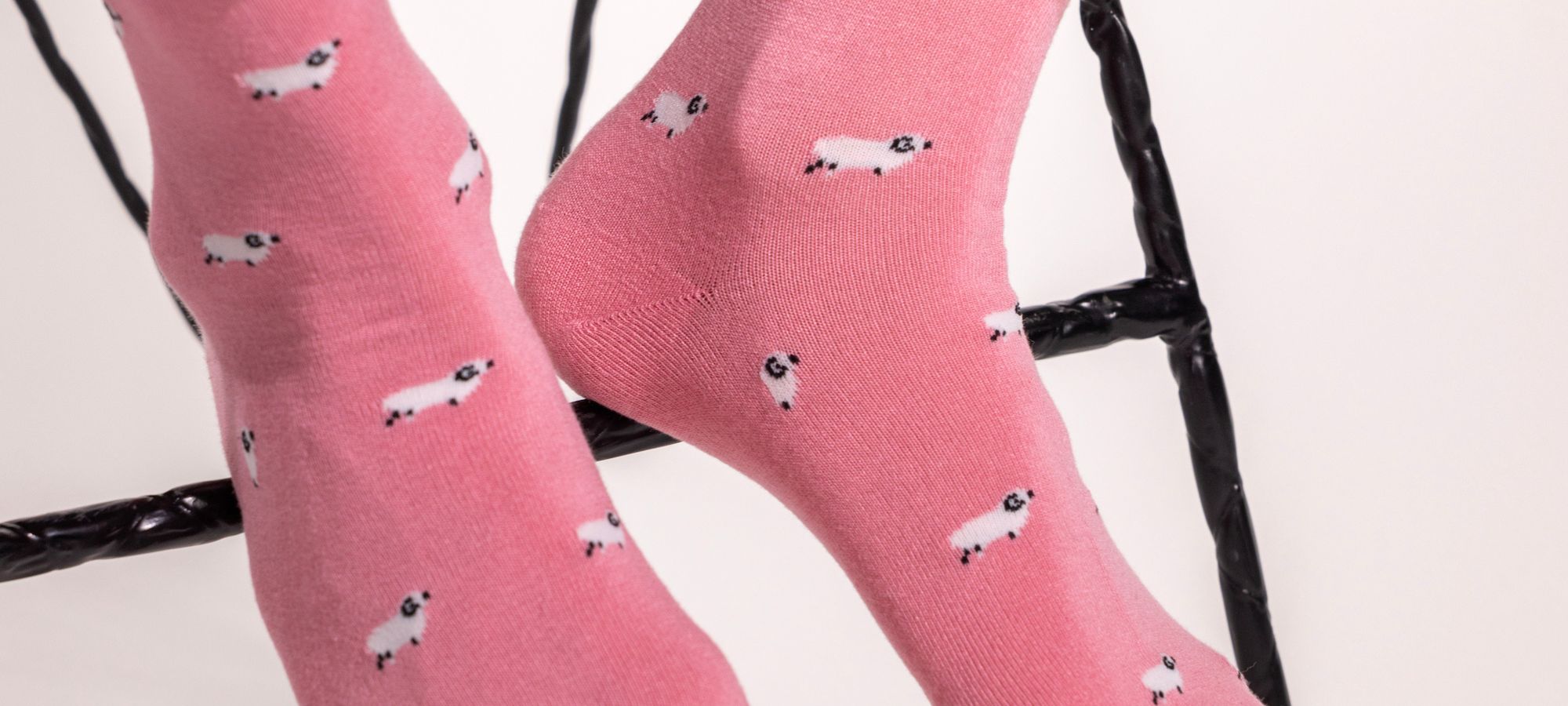When it comes to socks, most of us focus on patterns or colour rather than the materials they’re made from. But the debate of bamboo vs cotton socks is more important than many realise – especially if you value comfort, foot health, and sustainability. Both bamboo and cotton are popular, natural fibres, but each has its own strengths and shortcomings.
In this article, we’ll take a deep dive into cotton socks vs bamboo, helping you decide which material is better for your feet – and for the planet.
Bamboo vs. Cotton: Head-to-Head Comparison
To understand which sock comes out on top, it’s helpful to know exactly what each material is and how it performs in everyday use. From comfort and durability to moisture control and environmental impact, we’ll explore each aspect in detail.
Understanding the Fibres: Bamboo and Cotton
What Are Bamboo Socks?
Bamboo socks are made from fibres derived from the bamboo plant. Bamboo is processed either mechanically or chemically to create a soft, breathable textile that has quickly become a favourite in the eco-conscious fashion world.
The resulting fabric is smooth to the touch, naturally antibacterial, and highly moisture-wicking. At Swole Panda, our bamboo cotton socks blend the best of bamboo’s performance with just the right amount of elastic stretch for durability and a perfect fit.
Key Characteristics:
-
Silky-soft texture
-
Thermo-regulating (cool in summer, warm in winter)
-
Moisture-wicking and breathable
-
Naturally odour-resistant and antibacterial
-
Hypoallergenic and gentle on skin
What Are Cotton Socks?
Cotton socks are traditionally made from the fibres of the cotton plant. This familiar material has been a staple in textiles for centuries due to its softness, availability, and affordability.
Cotton is comfortable and natural, but it does have limitations – particularly when it comes to moisture control and longevity under regular wear and tear.
Key Characteristics:
-
Soft and breathable
-
Affordable and widely available
-
Less effective at moisture control
-
Can become heavy and soggy with sweat
Health and Comfort: What’s Better for Your Feet?
When comparing bamboo vs cotton socks for comfort and foot health, bamboo typically comes out ahead.
Bamboo fibres are naturally moisture-wicking, helping to keep feet dry and odour-free – a major win for those prone to sweaty feet or fungal issues. They’re also incredibly soft, reducing friction and the risk of blisters, making them ideal for long days on your feet or for use in tight-fitting footwear.
Cotton socks, by contrast, tend to absorb and hold onto moisture, which can lead to discomfort and even bacterial growth if worn for extended periods. For people with sensitive skin or allergies, the hypoallergenic properties of bamboo are another point in its favour.
Environmental Impact
Sustainability is where bamboo really shines. Bamboo is a fast-growing, renewable crop that requires minimal water and no pesticides to thrive. It regenerates naturally and has a much lower environmental footprint compared to traditional cotton farming.
Cotton, while natural, is one of the most water-intensive crops on the planet. It often requires heavy pesticide use and has a significant environmental impact during cultivation.
If you’re making an effort to live more sustainably, choosing bamboo socks over cotton is a small but impactful switch.
Ideal Use Cases of Bamboo Socks
Because of their unique properties, bamboo socks are a game-changer for certain lifestyles and conditions. They’re ideal for:
-
Athletes: Stay dry and comfortable during intense workouts
-
Travellers: Long-haul comfort, odour control, and temperature regulation
-
People with sweaty feet: Breathable and antibacterial
-
Sensitive skin: Hypoallergenic and gentle
Colourful bamboo socks from brands like Swole Panda combine this performance with standout style, offering a fresh alternative to boring basics.
Durability and Maintenance: Lifespan and Care
When properly cared for, bamboo socks can be extremely durable. They hold their shape, resist pilling, and maintain softness after many washes.
To get the most from your bamboo socks:
-
Wash at 30°C or below
-
Avoid tumble drying if possible (low heat only)
-
Skip bleach and harsh detergents
Cotton socks, while initially soft, tend to lose their shape faster, and may shrink or become rough over time. Bamboo’s superior longevity and resilience make them a better investment in the long run.
Health and Hypoallergenic Properties
Bamboo’s natural antibacterial and antifungal properties create a healthier environment for your feet. This makes them particularly well-suited for people with:
-
Allergies
-
Sensitive or broken skin
-
Athlete’s foot or other foot conditions
Cotton, while generally non-irritating, doesn’t offer the same protective benefits. If foot health is a concern, bamboo socks for men or women are the clear choice.
Conclusion: Which Should You Choose?
While cotton still has its place in the world of socks, especially for everyday wear on a budget, bamboo wins on nearly every front – from sustainability to softness, odour control to hypoallergenic benefits. If you’re debating bamboo cotton socks vs 100% cotton, the blended or pure bamboo options will likely give you superior performance and comfort.
Recommended Brands:
-
Swole Panda – For premium, eco-friendly, and colourful bamboo socks with a perfect fit. Their bamboo socks for men and women combine performance and sustainability with sharp design.
-
Thought Clothing – Offers a range of natural fibre socks including bamboo blends.
-
BAM Bamboo Clothing – Another sustainable label focused on bamboo activewear and basics.
Ultimately, your feet deserve better – and with bamboo socks, you get better for them and the planet.
Make the switch to Swole Panda’s bamboo socks today and feel the difference with every step.









































Leave a comment